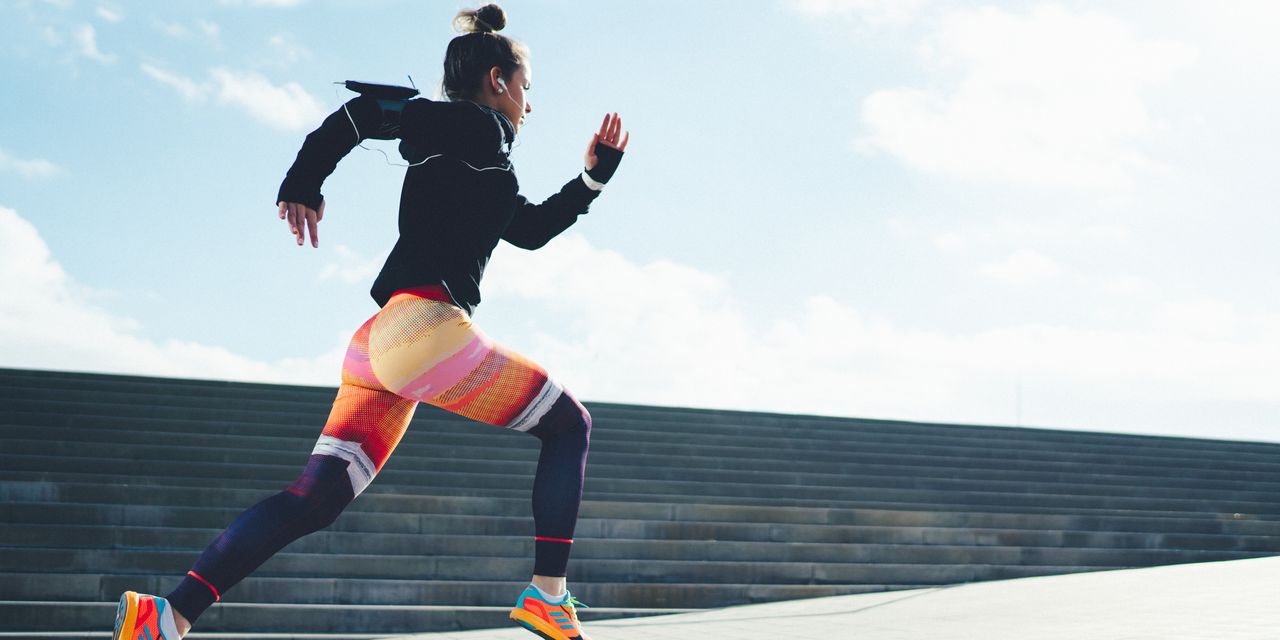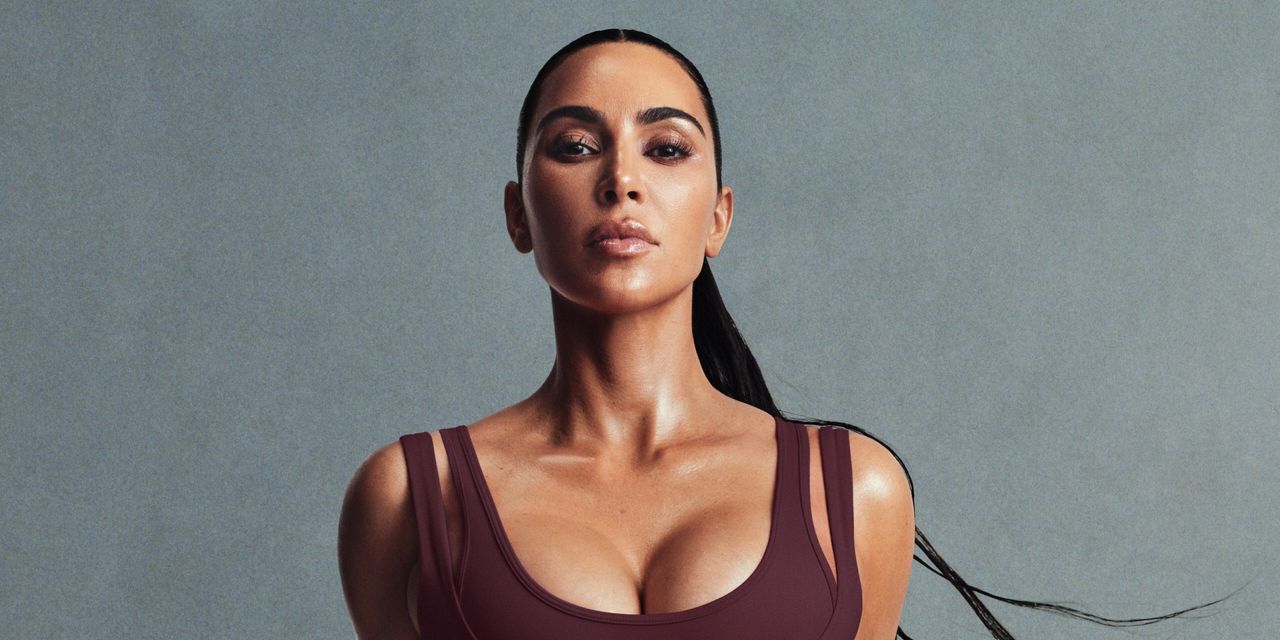Your Ultimate Guide to the Comfiest Walking Shoes Out There

If you’re a daily stroller, frequent errands-runner, or somebody who prioritizes comfort around the clock, your feet deserve the best walking shoes you can find. We’re here to help make your search as seamless as possible.
We spoke with experts (including podiatrists and physical therapists) and dug through road–tested SELF Sneaker Award winners from years past to find the cushiest, most supportive shoes for all walks (heh) of life. Shop our favorites below.
Our top picks
- Best Overall: Hoka Bondi 9, $170
- Best Cushioned: New Balance 608 V5 Cross Trainer,
$75$56 - Best for Long Distances: Brooks Ghost Max 2,
$150$120 - Best for Plantar Fasciitis: Kuru Quantum 2, $169
- Best for Walking and Running: Hoka Clifton 10, $150
- Best Budget Pick: Ryka Devotion X Max,
$110$78 - Best for High Arches: Vionic Walk Strider Sneaker, $165
- Best for Flat Feet: Hoka Arahi 7, $145
- Best for Wide Feet: Brooks Adrenaline GTS 24, $140
Shop the best walking shoes
They’ll put a spring in your step.
Best Overall: Hoka Bondi 9
SELF senior commerce editor Sarah Felbin testing the Hoka Bondi 9
Dolly Faibyshev
The recently revamped Hoka Bondi 9 has even more foam than its bestselling, SELF Sneaker Award–winning predecessor. SELF’s director of fitness and food took it for a spin and was immediately impressed by its close fit and cushy feel. “The Hoka-famous stack means it’s super comfy for standing, with all of that foam underneath,” she says. “Plus, there’s some nice padding around the tongue and heel counter.”
One note: The chunky sole might not be ideal for activities where agility is your top priority. But the Bondi isn’t too heavy, as far as walking shoes go. And its mesh upper boosts airflow—so your feet won’t feel fatigued or sweaty, even after multiple miles.
Sizes: US 4 to 12 | Widths: Medium, wide, and extra-wide | Materials: Mesh, recycled polyester, ethylene-vinyl acetate (EVA) foam, rubber | Weight: 9.30 ounces | Heel-to-toe drop: 5 millimeters
SELF senior commerce editor Sarah Felbin testing the Hoka Bondi 9:
Best Cushioned: New Balance 608 V5 Cross Trainer
New Balance
608 V5 Cross Trainers
Shopping market editor Angela Trakoshis testing the New Balance 608 V5 Cross Trainers
Dolly Faibyshev
New Balance’s 608 V5 sneaker has an all-leather upper and a soft foam midsole that resists compression (so it won’t squish flat after a week or two of wear). As shopping market editor Angela Trakoshis explains, it gave her a whole new perspective on the brand: “Never in a million years did I think that I would love a pair of New Balances like I love this shoe,” she says. “No shade, but I always felt like the brand was more of a ‘dad shoe’ kind of brand. But these? Comfortable and cute—double win!”
Another key detail: There are barely any seams inside, to prevent hot spots or blisters from forming on your first walk.
Sizes: US 5 to 12 | Widths: Narrow, medium, and wide | Materials: Leather, EVA foam, rubber | Weight: 9.8 ounces | Heel-to-toe drop: N/A
Shopping market editor Angela Trakoshis testing the New Balance 608 V5 Cross Trainer:
Best for Long Distances: Brooks Ghost Max 2
Senior commerce editor Sarah Felbin testing the Brooks Ghost Max 2
Dolly Faibyshev
Heading out on a long walk? You need a shoe that’ll cushion every single step without weighing you down. While some max cushion sneakers can feel a little unwieldy, Brooks’s Ghost Max 2 avoids that with impressively lightweight, air-injected foam throughout its midsole and a subtly curved outsole (often referred to as a rocker bottom sole, which can help you maintain forward momentum and make your steps feel easier).
“It’s not uncommon for my feet to feel a little sore after especially long walks with my dog,” our senior commerce writer says. “But on the days I tested the Ghost Max 2s, I genuinely looked forward to taking leisurely strolls in 30-degree weather—and even indulged my pup when she insisted we go a few blocks farther. These shoes are definitely not springy, but they make walking on hard surfaces—even for hours at a time—feel next to effortless.”
We also love that this sneaker has earned the seal of acceptance from the American Podiatric Medical Association (APMA). The seal is only awarded to shoes that a panel of podiatrists feel are actually good for your feet, so you know they’re built for logging some serious miles.
Sizes: US 5 to 12 | Widths: Medium, wide, and extra-wide | Materials: Mesh, EVA, rubber | Weight: 9.7 ounces | Heel-to-toe drop: 6 millimeters
Senior commerce editor Sarah Felbin testing the Brooks Ghost Max 2:
Best for Plantar Fasciitis: Kuru Quantum 2
Shopping market editor Angela Trakoshis testing the Kuru Quantum 2
Dolly Faibyshev
No pair of shoes can permanently treat the heel pain that comes with plantar fasciitis, but Kuru’s intentionally designed Quantum 2 can certainly provide some relief. It has built-in arch support, a moderate heel-to-toe drop, and heel-cradling cushioning directly under the back of your foot. All of these features help distribute the impact of your steps, so pressure doesn’t build on your heel and cause you discomfort while you’re on the move.
Even better, the Quantum 2 is backed by experts—it comes highly recommended to SELF by podiatrists and physical therapists alike.
Sizes: US 5 to 12 | Widths: Medium and wide | Materials: Mesh, synthetic | Weight: 10.8 ounces | Heel-to-toe drop: 8.5 millimeters
Shopping market editor Angela Trakoshis testing the Kuru Quantum 2:
Best for Walking and Running: Hoka Clifton 10
SELF senior commerce editor Sarah Felbin testing the Hoka Clifton 10
Dolly Faibyshev
Trying the walk-run method or looking for a sneaker you don’t have to swap out on training days? The Clifton 10 is another plush offering from Hoka, but it’s slimmer and weighs less than the Bondi (and previous Clifton models). We’re not quite sure how the brand packs so much foam into a 9-ounce sneaker (but we’re certainly not complaining about it).
Our senior commerce editor, Sarah Felbin, has wide feet and bunions, so she ordered the wide width—and was thrilled she did. “It fits me perfectly, with plenty of space for my toes to spread out,” she says. “I love the rocker curve too—it makes me feel like I’m doing less work while walking, even on my second lap around the Central Park reservoir.”
Sizes: 4 to 12 | Widths: Medium, wide, and extra wide | Materials: Knit, EVA foam, rubber | Weight: 8.8 ounces | Heel-to-toe drop: 8 millimeters
SELF senior commerce editor Sarah Felbin testing the Hoka Clifton 10:
Best Budget Pick: Ryka Devotion X Max
The layered, shock-absorbing sole on these Ryka sneakers will keep your feet happy for less than most other options on this list. The APMA-approved Devotion X Max has solid arch support, an extra padded heel, and a rocker bottom to help naturally push you forward as you walk.
Felbin loves the Devotion X Max’s marshmallow-y cushioning: “These are by far the softest, most comfortable sneakers I’ve ever worn—it’s like walking on air,” she wrote in her review of the shoe. “Plus, I have wide feet and the medium width fits me perfectly, with plenty of space in the toe box. Nice and roomy!”
Sizes: US 5 to 12 | Widths: Medium, wide | Materials: Mesh, leather, synthetic materials, EVA foam, rubber | Weight: 9.8 ounces | Heel-to-toe drop: 10 millimeters
Best for High Arches: Vionic Walk Strider Sneaker
Vionic
Walk Strider Sneaker
The Walk Strider—another APMA–accepted shoe—has all the arch support you need. High-rebound cushioning in the sole pairs with an anti-roll design, for a springy (but stable) ride. Meanwhile, the lightweight, flexible insole provides some lift without feeling too hard on your feet.
“Even though I have high arches, I shy away from shoes that tout their ‘arch support’ because, more often than not, the insole’s crest hits at an uncomfortable part of my foot,” says one SELF tester. “The Vionic’s instep, however, is just right. When wearing these sneakers, my feet feel held in a neutral position, helping me avoid overpronation” (which happens when your feet and ankles roll inward as you walk).
Sizes: US 5 to 13 | Widths: Medium and wide | Materials: Leather, mesh, EVA, rubber | Weight: N/A | Heel-to-toe drop: N/A
Best for Flat Feet: Hoka Arahi 7
Lots of Hokas are approved by the APMA—including the Arahi 7, which is an excellent shoe for walkers with flat feet. It’s designed to prevent overpronation, and while it lacks some of the cushioning you’ll find in other Hokas, that helps keep it stable and lightweight. One thing to keep in mind when selecting your size: According to some reviewers, the Arahi 7 runs narrow.
Sizes: US 5 to 12 | Widths: Medium and wide | Materials: Synthetic fabric, EVA, rubber | Weight: 8.10 ounces | Heel-to-toe drop: 5 millimeters
Best for Wide Feet: Brooks Adrenaline GTS 24
Our favorite walking shoe for wide feet, the Adrenaline GTS 24 earns high praise from podiatrists for its high-quality construction and stable, supportive design. It comes in four(!) widths—so, if you struggle to find shoes that are roomy enough, we recommend giving this one a try.
Also key: It has Brooks’s GuideRails system (firm foam pieces inside the shoe that help keep your feet properly aligned as you walk), a major plus for anyone who overpronates. Just ask Christa Sgobba, SELF’s director of fitness and food: “I overpronate when I run, and while I can run in neutral shoes, I do appreciate the extra control, especially when I find myself getting tired,” she says. “It’s a solid shoe for easy days and also for walking.”
Sizes: US 5 to 13 | Widths: Narrow, medium, wide, and extra wide | Materials: Mesh, foam, rubber | Weight: 8.8 ounces | Heel-to-toe drop: 12 millimeters
More great options
Already have a closet full of sporty sneaks? Try these casual pairs and sandals for a little something different.
Dr. Scholl’s Hannah Retro Sneaker
Dr Scholl’s
Hannah Retro Sneaker
If you’ve filed Dr. Scholl’s away in your brain as just a maker of orthotics, you’re seriously missing out. The brand’s shoes are as cute and trendy as they are comfortable. (And that’s really saying something: Dr. Scholl’s was created by a podiatrist, after all.)
The Hannah Retro sneaker features the brand’s “BLOOM” insole—a springy, cushy footbed made from plant-based EVA foam. “After falling in love with Dr. Scholl’s platform Time Off sneaker, I clambered to try as many shoes featuring the same padded insole as I could,” one SELF tester says. “The Hannah Retro quickly stole my heart with its bouncy step and ‘80s-track-inspired aesthetic. It looks great with jeans, skirts, and athleisure, and it feels on-trend strutting about New York City.”
Sizes: US 6 to 11 | Widths: Medium | Materials: Microfiber, faux leather, EVA foam, polyurethane | Weight: N/A | Heel-to-toe drop: N/A
Chaco Z/1 Classic Sandals
With an “ugly cool” gorpcore aesthetic and a stamp of approval by the APMA, there’s plenty to love about Chaco’s Z/1. Physical therapist Nick Cutri, PT, DPT, CSCS, specifically called out the sturdy arch support in its contoured footbed when he previously recommended it to SELF.
Our senior commerce writer, Sara Coughlin, swears by Chacos for warm weather walks—in fact, they’re the only sandals she’s willing to wear. “They don’t feel foamy or squishy, but that’s not to say they’re rock-hard, either,” she wrote in her review. “The Z/1’s insole has some give to help absorb the impact of my footsteps, and it’s flexible enough to bend with my foot while I walk. It’s undeniably sturdy (and, at 11 ounces per shoe, pretty heavy) for a sandal, but I like how substantial it is.”
Heads up: The Z1 Classic may feel a little too firm or rigid for some, but it’s built to last. Case in point: “As a teenage camp counselor, these were my go-to sandals and I still have the same rugged pair a decade later,” another SELF tester says. “They are extremely durable and the sole has a hefty weight to it, which is helpful for walking in water. They never gave me blisters, but did give me some gnarly tan lines.” Foot tan aside, the Z1’s straps earned points from Dr. Cutri, who appreciates their adjustable design.
Sizes: US 5 to 12 | Widths: Medium and wide | Materials: Polyester, polyurethane, rubber | Weight: 11 ounces | Heel-to-toe drop: 6.35 millimeters
How we chose the best walking shoes
A shoe that cushions the impact of your steps (say, with a thick sole or foam padding) can reduce your risk of foot, ankle, and knee pain, Jossie Abraham, DPM, a podiatric surgeon at Hartford HealthCare Orthopedic Institute at St. Vincent’s Medical Center in Connecticut, tells SELF.
Your walking shoes should have a wide base and plenty of support through the midfoot and arch. Both of these design elements can reduce the strain on your lower body.
A good walking shoe should be built for regular use and feel comfortable, even during long periods of wear. It should be breathable and at least somewhat flexible, and it also needs to fit your foot correctly (more on that below).
What should you look for in a walking shoe?
In addition to the key features we mentioned earlier, it’s also important that your walking shoe of choice fits your foot’s length and width (check out SELF’s sneaker buying guide for detailed tips on how to find the best size). According to the American Academy of Orthopedic Surgeons, your shoes shouldn’t make your toes feel cramped or like they can’t wiggle. People with wide feet should look for footwear that comes in multiple widths or has a larger toe box.
FYI: Your foot size can change as you age. “You would be surprised at how many people come to see me with toe pain and their shoes are too small!” Alicia Canzanese, DPM, ATC, a board-certified podiatrist, athletic trainer, and former collegiate track athlete, tells SELF.
“If it’s been more than five years since you have taken the time to measure your feet, get your feet measured and sized,” she says. “Many local running shoe stores or your podiatrist’s office will do this for you. Most retail stores like Dick’s will still have a Brannock device—a traditional measuring tool for shoe size—hiding somewhere too.”
A good guideline to follow: When you’re standing in your new shoes, there should be a space about the length of your thumbnail between the tip of your longest toe and the front of your shoe, says Dr. Canzanese. Then, walk around for a while (and don’t skip this step). “Sometimes, an option will feel perfect standing,” Kate Reese, general manager of Brooklyn Running Company, previously told SELF, but will pinch or chafe as you start to move in them.
If you find that your feet, knees, hips, or back are sore after standing or walking all day, your shoes probably aren’t supportive enough. Look out for hot spots, blisters, or cramped, bruised toes—these issues are signs that you either need a different fit or bigger or wider shoes.
Dr. Abraham recommends shoes with a mesh upper because they tend to be stretchier (they’re also more breathable, compared to ones made of more rigid materials like leather). Ultimately, you don’t want to feel like your foot is fighting against the structure of the shoe—instead, look for shoes that mimic the shape of your foot.
If you struggle to find shoes with enough built-in arch support, have high arches, or have plantar fasciitis, putting over-the-counter or custom orthotics in your shoes can boost their stability.
Our experts
- Jossie Abraham, DPM, a podiatric surgeon at Hartford HealthCare Orthopedic Institute at St. Vincent’s Medical Center in Connecticut
- Alicia Canzanese, DPM, ATC, a board-certified podiatrist, athletic trainer, and former collegiate track athlete
- Kate Reese, general manager of Brooklyn Running Company
- Nick Cutri, PT, DPT, CSCS, a physical therapist
Product images courtesy of the brand
Related:
- The Right Weightlifting Shoes Can Improve Your Power and Form—Here Are 13 Expert-Approved Picks
- The Best Workout Shoes for Every Kind of Activity
- The Best Waterproof Hiking Boots, According to Experts
Get more of SELF’s great product recommendations delivered right to your inbox (for free!).




